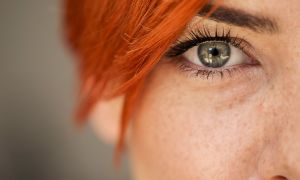Your eyes certainly do change shape, and it is measurable. Gas-permeable and the old, hard (polymethylmethacrylate) contact lenses change the shape of the eye more so than soft contact lenses.
Lenses that are fit flat in relationship to the front corneal surface flatten the central cornea. This has led to the practice of orthokeratology, which utilizes this effect to reduce nearsightedness, but the effects do not last. Contact lenses that are steeper than the cornea do not move properly, and the central cornea becomes oxygen deprived and swells.
The changes caused by steep or flat contact lenses create spectacle blur, a condition in which patients do not see well with their glasses when they first remove the contact lenses.
All long-term contact-lens wearers suffer thinning of their corneas. All of these things can be easily measured in the ophthalmologist's office but should not be apparent to the naked eye. If there is a bulging of the cornea noted on side view or while looking down, keratoconus is present, usually not related to contact-lens wear.
Continue Learning about Eye and Vision
Important: This content reflects information from various individuals and organizations and may offer alternative or opposing points of view. It should not be used for medical advice, diagnosis or treatment. As always, you should consult with your healthcare provider about your specific health needs.




